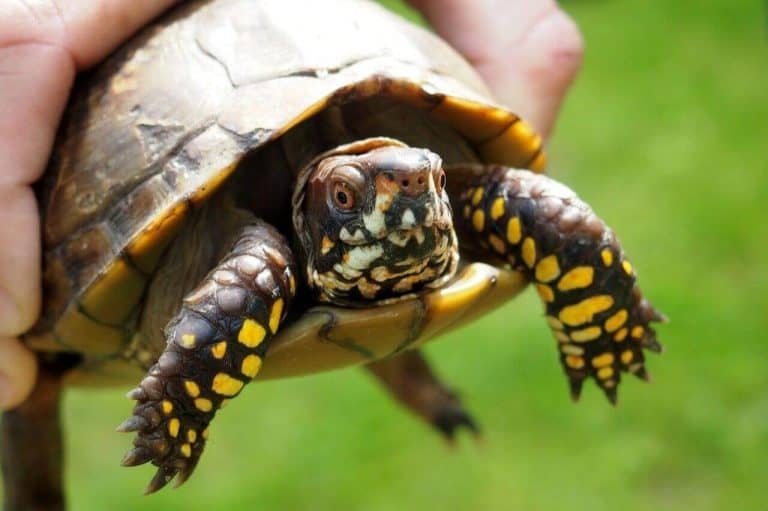How To Take Care Of Spotted Turtles?[Foolproof Guide]
Today we discuss How To Take Care Of Spotted Turtles. Spotted turtles are one of the most unique and fascinating species of turtles to keep as pets. With their distinct black shells covered in vibrant yellow spots, they are a popular choice among reptile enthusiasts.
However, caring for spotted turtles requires specific knowledge and attention to detail to ensure they thrive in captivity. In this comprehensive guide, we will explore everything you need to know about taking care of spotted turtles, from setting up their habitat to providing proper nutrition and handling.
How To Take Care Of Spotted Turtles:
Understanding Spotted Turtles:
Spotted turtles (Clemmys guttata) are small semi-aquatic turtles native to the eastern United States and parts of Canada. They are known for their striking appearance, with black shells adorned with yellow spots or streaks. These turtles typically grow to be around 4 to 5 inches in length and have a lifespan of 25 to 50 years in captivity. Spotted turtles are omnivores, feeding on a diet of both plant matter and protein sources such as insects and small fish.
Setting Up The Habitat:
Enclosure:
When setting up a habitat for spotted turtles, it is essential to provide ample space for them to swim and bask. A 20-gallon tank is suitable for a single adult spotted turtle, but larger tanks are recommended for multiple turtles or if you plan to add additional decor. Ensure the enclosure has both a water area for swimming and a dry area for basking.
Substrate:
For the substrate in the aquatic area, use fine gravel or sand that is easy to clean. In the basking area, provide a flat rock or platform where the turtle can climb out of the water to dry off and regulate its body temperature.
Lighting and Heating:
Spotted turtles require access to UVB lighting to help them metabolize calcium and maintain healthy shell growth. Provide a UVB lamp over the basking area and ensure a temperature gradient in the enclosure, with the basking spot reaching around 85-88°F and the water temperature around 70-75°F.
Feeding and Nutrition:
Diet:
A well-rounded diet is essential for the health of spotted turtles. Offer a variety of foods, including commercial turtle pellets, leafy greens, vegetables, fruits, insects, and small fish. Calcium and vitamin supplements should also be provided to ensure proper nutrition.
Feeding Schedule:
Feed juvenile spotted turtles daily, while adults can be fed every other day. Remove any uneaten food promptly to maintain water quality in the enclosure.
Water Quality and Filtration:
Filtration System
Maintaining clean water is crucial for the health of spotted turtles. Invest in a quality filtration system that is appropriate for the size of the enclosure and perform regular water changes to keep ammonia levels in check.
Water Depth:
The water in the enclosure should be deep enough for the turtle to fully submerge but shallow enough that they can easily reach the surface to breathe. Monitor water quality regularly with a test kit to ensure optimal conditions.
Enrichment and Handling:
Enrichment Activities:
Provide enrichment activities for your spotted turtle to keep them mentally stimulated. This can include adding plants, rocks, or hiding spots to the enclosure, as well as offering opportunities for exploration and exercise.
Handling:
Spotted turtles are generally shy and prefer minimal handling. When necessary to handle your turtle, do so gently and support their body properly to avoid causing stress or injury. Wash your hands before and after handling to prevent the spread of bacteria.
Health and Wellness:
Signs of Illness:
Monitor your spotted turtle for any signs of illness, such as changes in appetite, lethargy, shell abnormalities, or respiratory issues. If you notice any concerning symptoms, consult a veterinarian who specializes in reptiles.
Regular Vet Check-ups:
Schedule regular check-ups with a reptile veterinarian to ensure your spotted turtle remains healthy. A veterinarian can provide guidance on proper care, perform wellness exams, and address any health concerns that may arise.
Breeding and Reproduction:
Spotted turtles reach sexual maturity around 5-7 years of age. Breeding season typically occurs in the spring, with females laying small clutches of eggs in sandy soil. If you plan to breed spotted turtles, research proper breeding techniques and provide suitable nesting areas in the enclosure.
Legal Considerations:
Before acquiring a spotted turtle as a pet, it is essential to research any legal considerations regarding ownership and care requirements in your area. Some jurisdictions may have restrictions on keeping native species or require permits for ownership.
Remember that each turtle is unique, so always tailor your care routine to meet the specific needs of your individual spotted turtle. By following the guidelines outlined in this guide and staying attentive to your turtle’s well-being, you can create a thriving environment for your spotted turtle to flourish.

